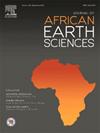也门西部地区地热温度精确预报的混合方法
IF 2.2
4区 地球科学
Q2 GEOSCIENCES, MULTIDISCIPLINARY
引用次数: 0
摘要
对清洁可靠能源日益增长的需求将地热能推向了研究的前沿。其基载发电的固有优势和最小的环境影响使其成为一个极具吸引力的选择。然而,地热资源的有效利用在很大程度上依赖于准确预测地热储层地下温度的能力。在也门,地热开发的一个关键障碍是缺乏可靠的经验相关性来预测这些关键温度。本研究提出了一种新的方法,即开发一种混合粒子群优化神经网络(PSONN)模型来克服这一挑战。从也门西部地区的108口地热井中收集了包含1402个数据点的数据集。该模型将影响地热温度的关键参数作为输入,包括:纬度;经度,温度梯度,地表温度,深度,海拔。地下温度作为模型的输出变量。然后策略性地将数据分为两组:70%指定用于训练PSONN模型,30%保留用于后续测试和验证其预测能力。该研究成功地建立了PSONN模型作为地下温度预测的有效工具。这一点得到了异常低的平均绝对百分比相对误差(APRE)的支持,为0.541,表明预测值与实际值之间的偏差最小。此外,0.11的低标准偏差(SD)表明模型预测的高度一致性。研究结果表明,PSONN模型具有较高的预测准确性,其性能指标(例如,APRE = 0.541, SD = 0.11, R = 0.999)与先前研究(例如,Haklidir, 2019;Altay et al., 2022)。有必要进一步与现有方法进行比较分析,以充分确定其相对优势。本文章由计算机程序翻译,如有差异,请以英文原文为准。
A hybrid approach for accurate geothermal temperature prediction in the western region of Yemen
The growing need for clean and reliable energy sources has propelled geothermal energy to the forefront of research. Its inherent advantages of baseload power generation and minimal environmental impact make it a highly attractive option. Nonetheless, effective utilization of geothermal resources relies heavily on the ability to accurately predict subsurface temperatures within geothermal reservoirs.
In Yemen, a critical barrier to geothermal development is the lack of robust empirical correlations for predicting these crucial temperatures. This study presents a novel approach by developing a hybrid Particle Swarm Optimization Neural Network) PSONN (model to overcome this challenge.
A dataset encompassing 1402 data points was collected from 108 geothermal wells located in Yemen's western region. The model incorporates key parameters influencing geothermal temperatures as inputs, including: Latitude; Longitude, Temperature gradient, Surface temperature, Depth, Elevation. Subsurface temperature serves as the model's output variable. The data were then strategically divided into two sets: 70 % designated for training the PSONN model and 30 % reserved for subsequent testing and validation of its predictive capabilities. The research successfully establishes the PSONN model as a highly effective tool for subsurface temperature prediction. This is supported by the exceptionally low Average Absolute Percent Relative Error (APRE) of 0.541, indicating a minimal deviation between predicted and actual values. Additionally, the low Standard Deviation (SD) of 0.11 signifies a high degree of consistency in the model's predictions. The findings suggest that the PSONN model achieves high predictive accuracy, with performance metrics (e.g., APRE = 0.541, SD = 0.11, R = 0.999) comparable to or exceeding those reported in prior studies (e.g., Haklidir, 2019; Altay et al., 2022). Further comparative analysis with existing methods is warranted to fully establish its relative advantages.
求助全文
通过发布文献求助,成功后即可免费获取论文全文。
去求助
来源期刊

Journal of African Earth Sciences
地学-地球科学综合
CiteScore
4.70
自引率
4.30%
发文量
240
审稿时长
12 months
期刊介绍:
The Journal of African Earth Sciences sees itself as the prime geological journal for all aspects of the Earth Sciences about the African plate. Papers dealing with peripheral areas are welcome if they demonstrate a tight link with Africa.
The Journal publishes high quality, peer-reviewed scientific papers. It is devoted primarily to research papers but short communications relating to new developments of broad interest, reviews and book reviews will also be considered. Papers must have international appeal and should present work of more regional than local significance and dealing with well identified and justified scientific questions. Specialised technical papers, analytical or exploration reports must be avoided. Papers on applied geology should preferably be linked to such core disciplines and must be addressed to a more general geoscientific audience.
 求助内容:
求助内容: 应助结果提醒方式:
应助结果提醒方式:


